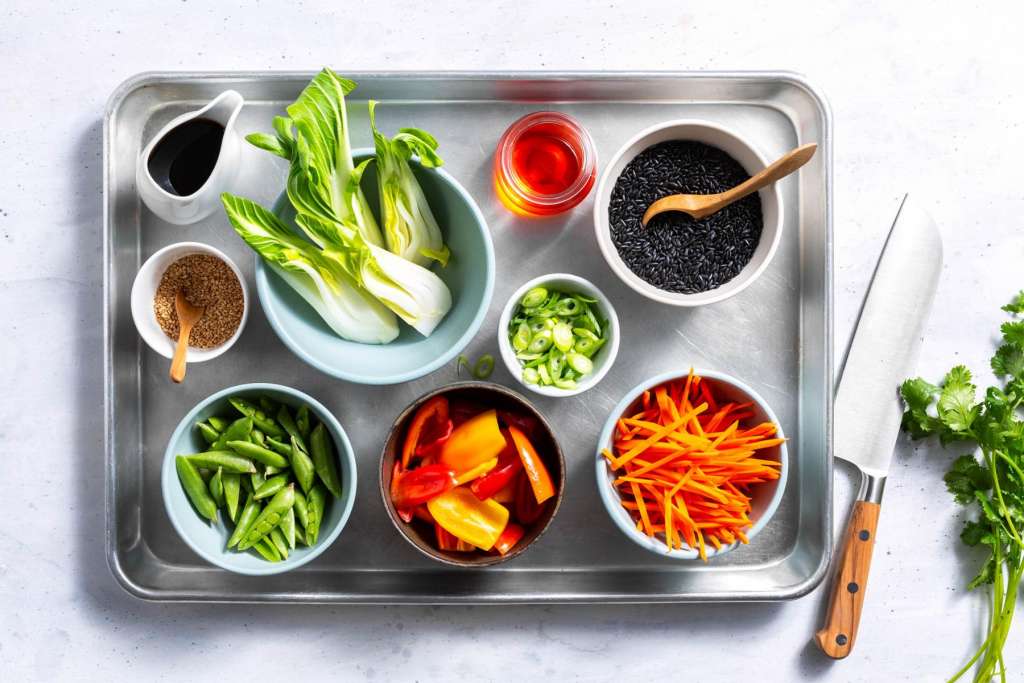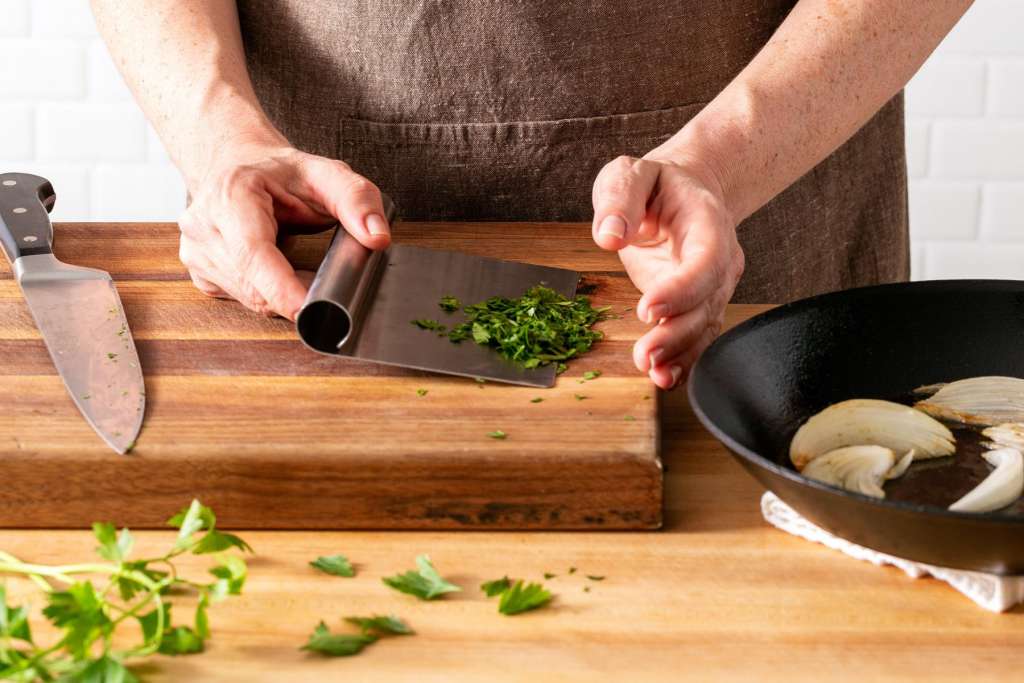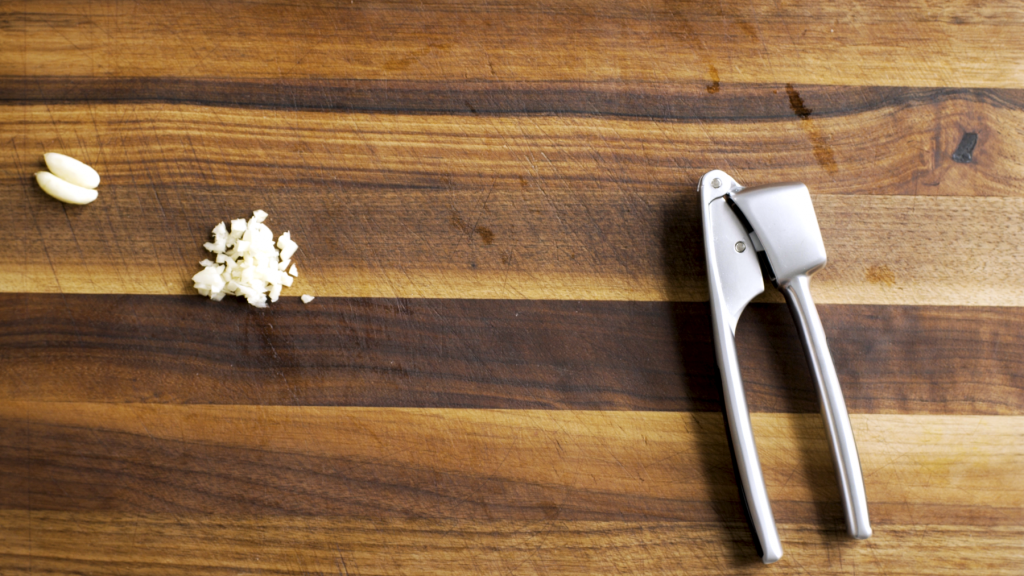A Guide to Mise en Place for Home Cooks

At the start of every day, the counters in the Sun Basket test kitchen are covered with sheet trays of small glass bowls filled with herbs, vegetables, and sauces alongside kitchen towels, tongs, and spatulas. No, the chefs aren’t hoarding their favorite snacks (though that’s not unheard of), those bowls are mise en place for the recipes our team will be developing that day.
Mise en place is French for “put in place.” In the kitchen, it’s a call to prepare yourself and the physical space for the work ahead, and it’s as essential to a professional kitchen as a sharp knife. Once you have all of the ingredients and tools assembled, it’s important to read the recipe so there are no surprises. Then, get to work dicing an onion, salting the steak, juicing lemons, etc.—whatever the recipe calls for—prepping the ingredients so you can move quickly once it’s time to start cooking. In your home kitchen, mise en place can be the difference between chaos and calm. When you mise, you can multitask, you’re less likely to make mistakes and have more time to clean as you go.
Read the recipe.
Say it louder for the people in the back. Taking the time to read a recipe through means there are no surprises during the cooking process. Quick-pickled onions get a little extra time in the brine, eggs have time to cool down before being boiled, and you’re not hunting for the vegetable peeler in the midst of cooking.
Gather everything you’ll need.
Think about preparing dinner the same way you think about getting ready for your day. You wouldn’t get into the shower without making sure you have soap and a towel nearby, the same applies to cooking. Once you’ve read the recipe, grab all of your ingredients from the pantry and fridge. Take the time to find your fine-toothed grater and choose the pan(s) you’ll be cooking in. Put everything within arm’s reach before you get to work.
Get chopping.
That sheet tray full of small glass bowls we mentioned earlier is a key component of mise en place, but you don’t need to find special bowls to be an organized cook. Use any containers or bowls you have around the house and choose them strategically. A small bowl is good for herbs or a few chopped cloves of garlic, but a chopped head of cabbage requires a bigger container. Setting everything on a sheet tray makes your mise portable so you can move easily from the counter to a space near the stove.
Stay organized.
Using all of those bowls can seem like a recipe for a sink full of dishes. While technically there are more things to clean, your newfound organization skills will leave you with an organized mess. Stack the mise bowls as you empty ingredients into the pan and clean as you cook. You’ll find that the mess is much easier to manage.









